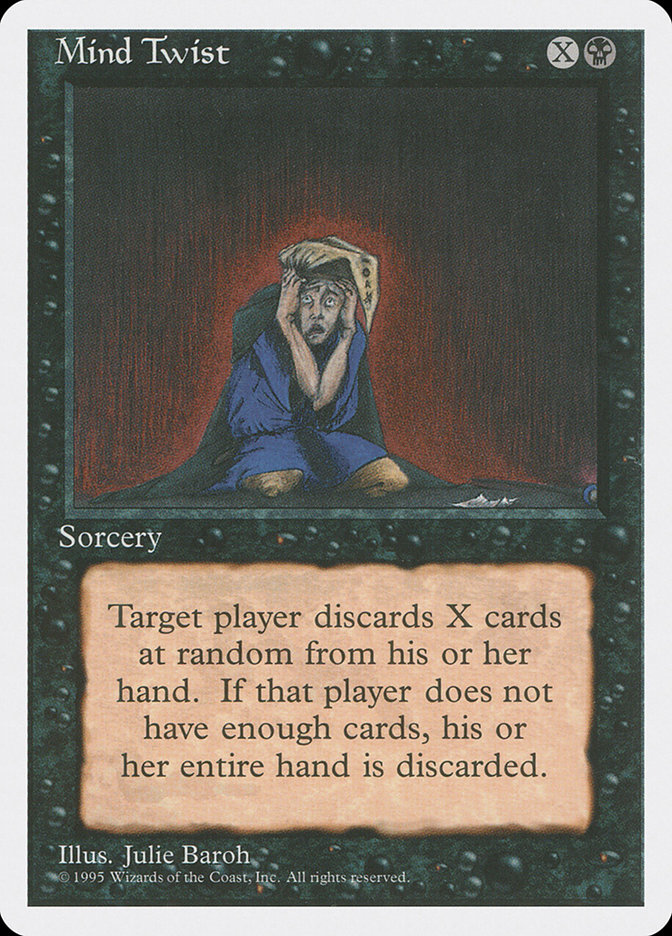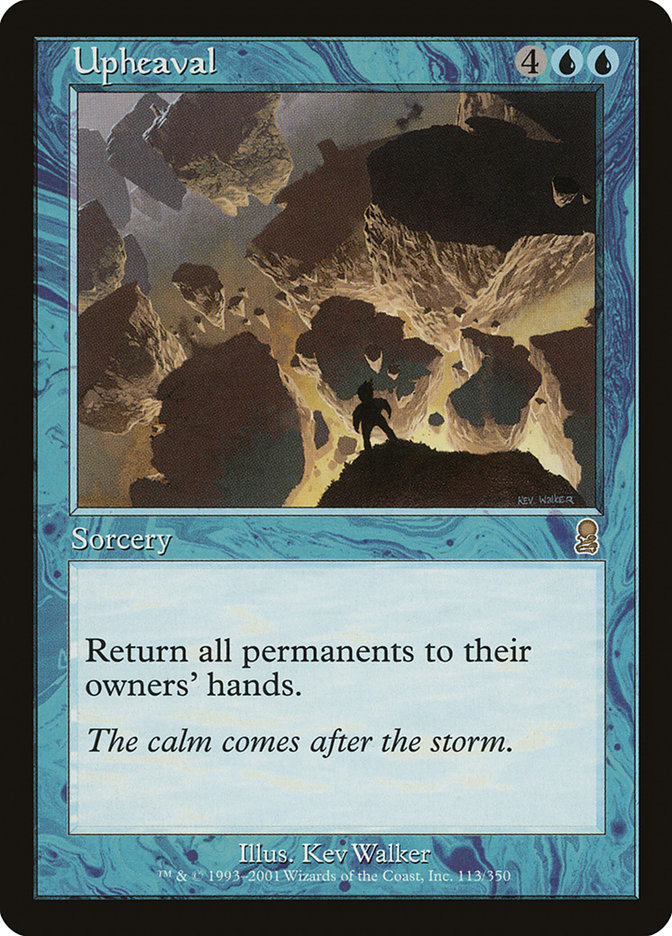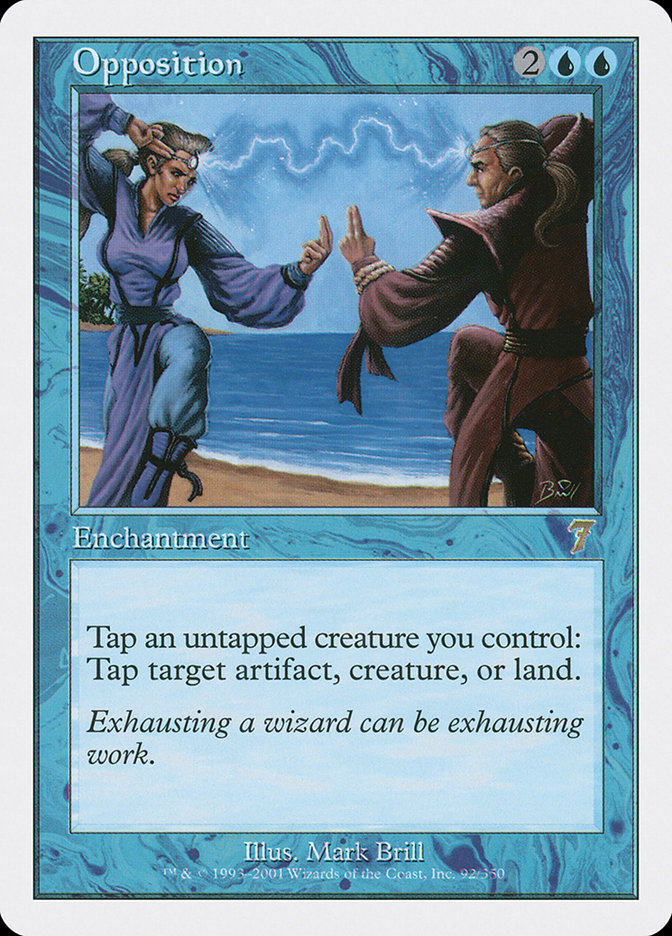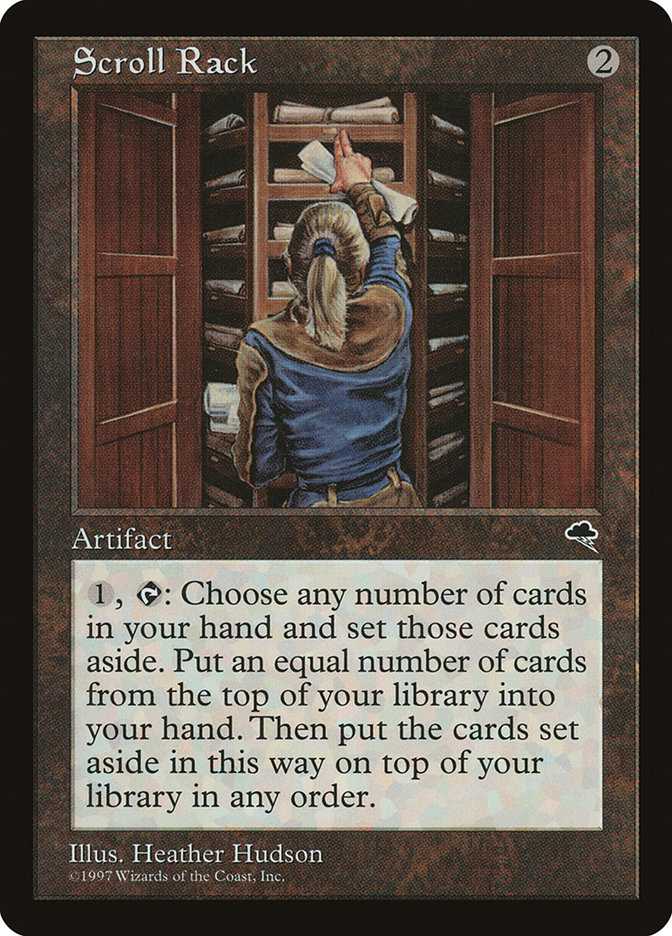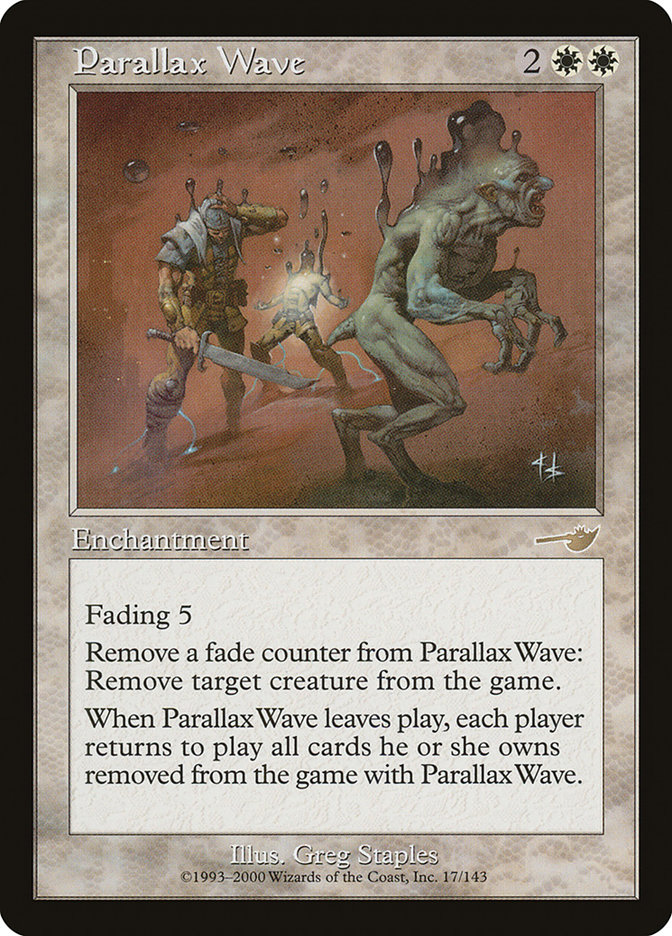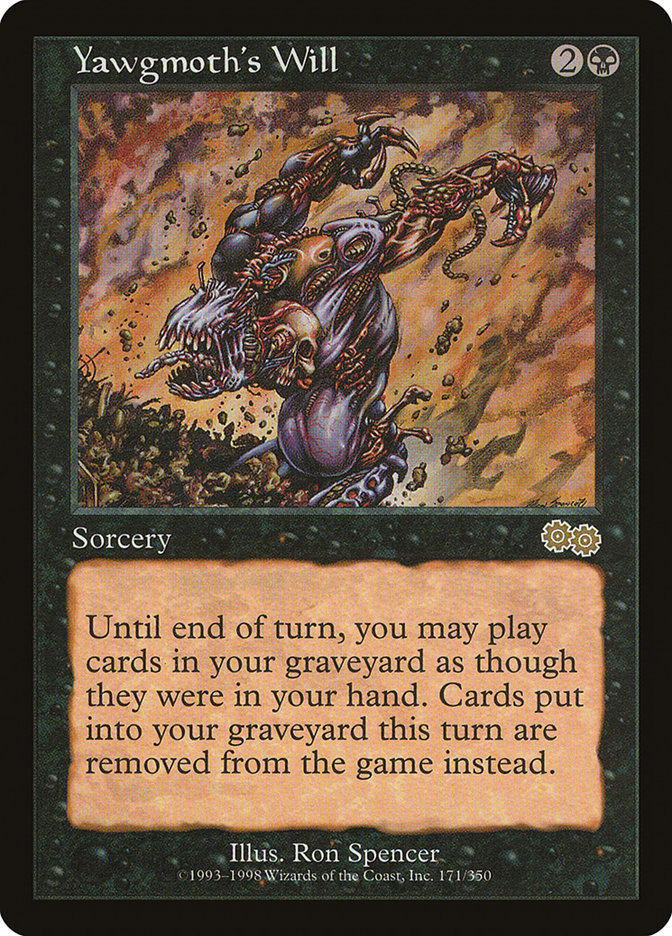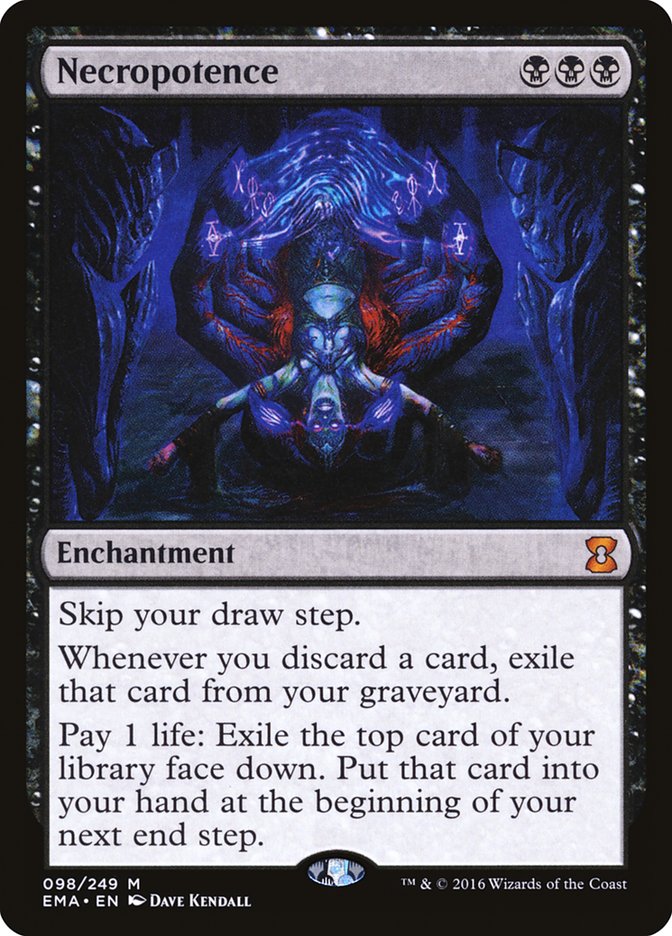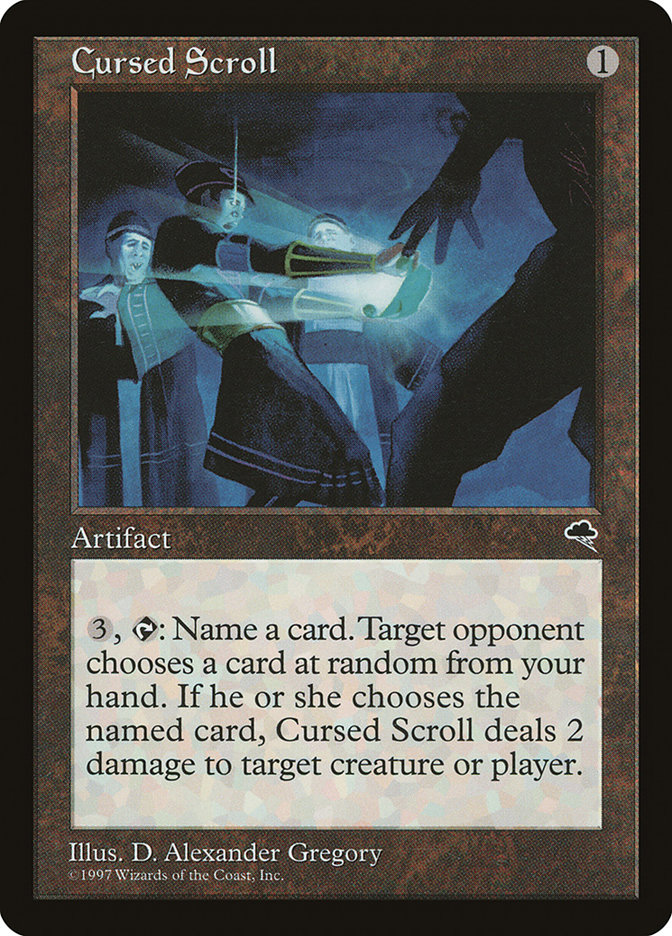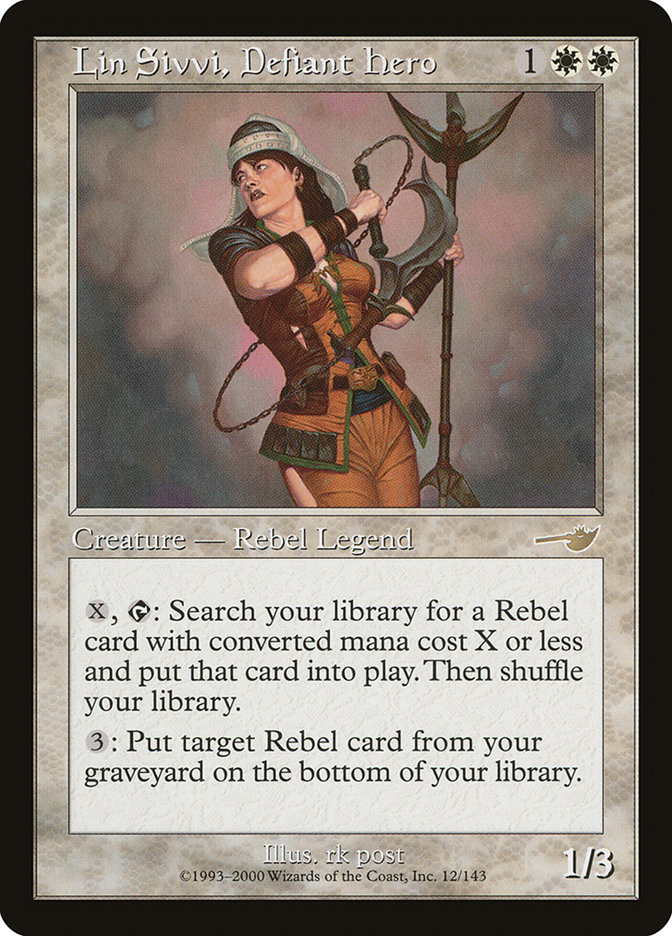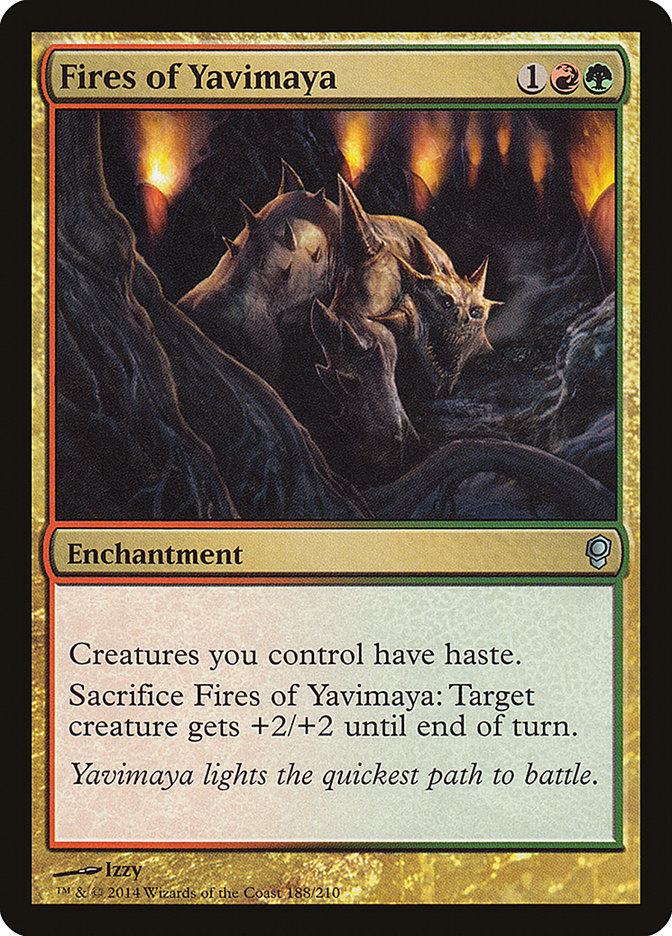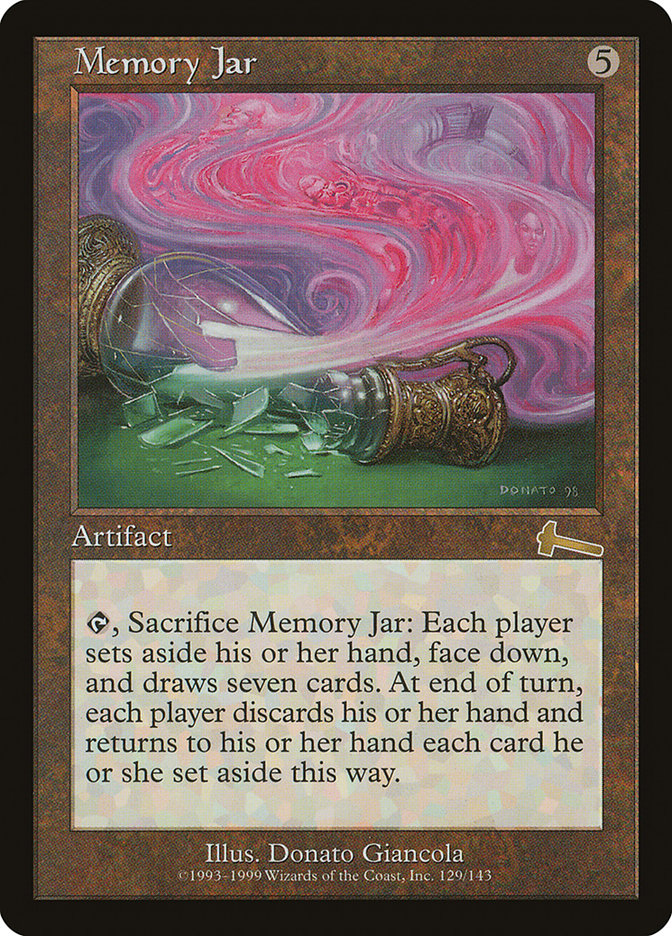You never know when a random question asked on a random day will generate enough chatter to give you an idea for an article. You never know, but when you’ve been writing a weekly article for over a year, you will always be grateful when these bursts of unexpected inspiration come up.
While in town for GP Providence, I spent an evening Cubing with a group of good friends. I don’t tend to do much Cube drafting, as it can be challenging locally to find eight interested people and the online offerings leave me distinctly nonplussed. Having passed a Mind Twist in the early parts of Pack 2 despite being in black, I was subjected to some looks of disbelief. Just about everyone cried, “This card is so good!” And that’s likely true, but never having played a format in which the card was legal, I was not in a position to know that. And I’ve been playing since 1997.
With the Holiday Cube not far off and with the You Make The Cube contest still fresh in our minds (the correct person won, thank goodness), I thought I would go over some of the most powerful cards of yesteryear that get overlooked in Cube drafts. Most of these cards are not obviously powerful on the face, and people who weren’t around when the card saw play will often miss their utility. This is especially true of cards with no modern-day analog. For example, most people can tell Counterspell is powerful because of all the Cancel-like cards that are good now. Something like Necropotence, on the other hand, needs some unpacking.
For the most part I have stuck with cards that are not Legacy staples, as people who follow competitive Magic will likely know how powerful Show and Tell is or how Force of Will was once considered a bad card while Balduvian Horde (also an Alliances “rare”) hit $40 and was hailed as the best card in the set. Because responses to my question on social media were so varied, I have split this into two sections, one for Cube All-Stars and another for cards that you really had to see in action to understand.
Cube All-Stars
This was the card that caused me to come up with the question in the first place. A few years back, when I still had my own Cube, I got a third-pick Recurring Nightmare in Pack 1. Not one to pass up free value, I went on to build a ridiculous five-color deck with things like Coiling Oracle, Baleful Strix, Reveillark, Geist-Honored Monk, and a suite of value creatures topped off by Gisela, Blade of Goldnight. I played the person who opened it, and when I cast Recurring Nightmare and immediately sacrificed a Solemn Simulacrum to return Reveillark to the battlefield, he tried to Beast Within in response.
Sorry, friend, that’s not going to work.
Part of what makes Recurring Nightmare so busted is that you can’t respond to the activation by destroying it. The “return to hand” is part of the cost. That means that if you play against someone who knows what they are doing, you will only have two ways to stop it: discard spells and countermagic. Having drafted the Nightmare, all you really need to do is find creatures to go with it. You can go the value route, taking creatures with enters-the-battlefield effects to keep switching in and out of the graveyard, or you can go the traditional Reanimator route and draft huge creatures and ways to get them in the graveyard. Mixing and matching can also work. If you can get Thragtusk or, heaven forbid, a Wurmcoil Engine, you would be forgiven for cackling. Yes, Recurring Nightmare does require you to build around it to some degree, but if you are in any way a value deck, then you really want to think hard about passing it.
To bring us back to the game I mentioned above. My opponent looked at the card in dismay, realized I was right, and told me he had no idea the card was even good. Needless to say, he quickly revised that opinion when on the next turn I sacrificed Reveillark to bring back Thragtusk with the Recurring Nightmare and Elvish Visionary and Baleful Strix with the Reveillark trigger. That was fun.
By the way, Recurring Nightmare is one of very few cards on this list that were banned in Standard. It formed a disgusting combo with Survival of the Fittest that allowed us (you’d better believe I played it) to tutor up any creature and get it on the battlefield for a mere 2BGG. It’s also the last time that I can remember that a cheap permanent reanimation effect was printed. Feel free to correct me on that, but Zombify is the next one I recall and it cost 3B for a one-shot usage.
This might be even more drastically underrated than Recurring Nightmare, but it is less my style, so I am putting it second. So there.
A symmetrical effect that bounces everything on the battlefield does not, on its face, seem like something we would want to play. That it costs six mana only increases the unease of the uninitiated, because bouncing all that land surely means you will be discarding a lot of cards? It might be good when you’re behind, but how does it actually win you the game?
It turns out that something else people like to do in Cube is ramp. Whether through mana creatures or mana rocks, getting a jump on your opponent in terms of mana production is often a powerful strategy. When you can cast an Upheaval and float five or six mana to redeploy your mana rocks or a threat after clearing the battlefield, your opponent is going to be hard-pressed to come back when you consider they are often (effectively) starting from turn 1. If you manage to fill your deck with the likes of Thragtusk, Reveillark, or any other leaves-the-battlefield effect, you are even further ahead. And if you are lucky enough to be playing the opponent with Oblivion Ring, Detention Sphere, and Fiend Hunter? The game might as well be over.
Much like Recurring Nightmare, Upheaval does need you to build around it. You want mana rocks (which are often in high demand), cantrips (similarly in high demand), something that will actually win the game (you’re ramping anyway, so go nuts), and probably some way to stay alive. The deck is very powerful when it comes together, but it does require some luck in assembling the pieces. Nonetheless, the card itself is terrifying in the right deck and passing it will often be fatal.
The fact that every mass bounce effect since Upheaval has specified “nonland” should go some way to explaining how busted this card is. It’s also probably why people underrate it, as they subconsciously insert those words in the text. One could argue that Cyclonic Rift is a decent comparison, as it is one-sided, but part of the power of Upheaval is often the fact that you get to bounce your Sol Ring, Mana Vault, and Grim Monolith.
I have fallen prey to underestimating this card myself, and it felt really, really bad. It arguably requires less “build around me” than the previous two entries, and it is also much easier to miss. Take a closer look at that text box, friends. Yes, that says “…or land.” Opposition turns each of your creatures into a free Icy Manipulator.
Generally you will want to draft Opposition in a token-based strategy, with something like Awakening Zone or Mobilization being the ideal choice. Once your creature count exceeds their land count, you will be able to lock your opponent out of anything but instants. Every turn. Without spending mana. Are they relying on mana rocks for ramp? Oh, hey, look, we can tap them down too. As you are able to keep developing your battlefield, you will inevitably be able to take control of the game. Winning the game can be as simple as finding something like Deranged Hermit or Cloudgoat Ranger, both very good friends with Opposition.
Even without token generation, Opposition gives you an extremely powerful tool to tap down troublesome permanents. If you are able to draft creatures with vigilance, you’re on cloud nine. Even without them, you can just selectively tap down whatever scares you and deal with the rest as needed. Clearly the card is less powerful this way, but it is still worth playing in any deck that can cast it and is running creatures.
Again, there has been nothing resembling Opposition in recent years. Glare of Subdual was the closest, printed in Ravnica, but it could not tap lands. Opposition was part of some powerful decks with both Deranged Hermit and Squirrel Nest, but is arguably better in Cube than it ever was in any Constructed format.
If Sensei’s Divining Top ever gets banned in Legacy or Commander, Scroll Rack will likely replace it. Heck, many Commander decks now play both. The card is seemingly innocuous, but the ability to essentially draw a slew of extra cards with only a minimal investment is of course very strong. The card is awkwardly worded, but it normally plays out like this:
Cast Scroll Rack.
Activate, exiling three cards. Draw three cards. Put your old hand on top of your library.
Cast one of the cards you drew, which happens to be a cantrip.
Next turn, draw for the turn and then activate Scroll Rack. Dig deeper into your library.
Rinse and repeat.
Let’s ignore the ability to stack a miracle on top of your deck. In Cube that is decidedly less powerful than in Legacy, since there are often only a couple of miracles in the Cube. The worst-case scenario for Scroll Rack is having an empty hand. In that case you draw, for the turn, activate it, and draw the top card. If you can’t play that card, next turn you draw and activate again, and go two deep. While not exactly powerful, the extra options make flooding out less likely.
Where the card really shines is in any deck that likes to keep cards in hand. The activation cost is minimal, and the effect is comparable to that of Sensei’s Divining Top. Yes, it lacks the ability to activate it multiple times in a turn, but you can also go deeper than you can with the Top. I would be surprised if a Scroll Rack activation was less time-consuming than a Top activation, in fact. It is certainly just as annoying to watch from the other side of the table.
And we haven’t even discussed what happens if you can shuffle your library. Hint: it’s better.
As an artifact with minimal cost and a solid fail case, Scroll Rack is the sort of card you can feel good about taking early. You’re rarely going to cut it, and it will save your life quite often. Sensei’s Divining Top was the last truly comparable card to be printed, and it is banned in Modern and reviled in Legacy and Commander. Having a second hand is good, apparently. It might not look like that’s the effect you get here, but trust me. That’s the effect you get.
So this is just a delaying tactic, right? They get the creatures back and then beat my face in? Why is this good? Well, because of the stack.
When Parallax Wave was seeing the most play, it had two tricks it could use. Opalescence made Parallax Wave a creature itself, which allowed it to exile itself and come back with a fresh set of counters. Some Cubes may allow this combo with either Opalescence or Starfield of Nyx, but it’s not reliable.
The other trick is a lot easier to pull off, however: activate, hold priority, activate again, and repeat until you have removed the last counter. Then make it leave the battlefield somehow, with all the activations on the stack. This will trigger the leaves-the-battlefield ability on Parallax Wave, but the opponent’s creatures haven’t been exiled yet. Oh, that’s a shame. Now let’s resolve those exile abilities, shall we? What’s even better is that the opponent can’t respond until you have passed priority, so the best they can do is to destroy the Wave in response to you attempting to bounce or flicker it.
That’s level one. Even if your opponent doesn’t have five creatures (or however many counters you have on the Wave), you can target the same one multiple times. You can also target your own creatures (might I recommend a Mulldrifter?), let the ability resolve, and then do the trick above to handle the rest of the counters. You get your creature back. They get nothing. They lose. Good day, sir.
Parallax Wave was part of a cycle in Nemesis (that bastion of tournament-quality cards) but has not been seen since. In fact, the effect remains unique. The closest I can think of is Quarantine Field, and that comparison is tenuous. I think you could print something similar by getting rid of fading and just making the sacrifice a trigger on the removal of the last counter (and having one counter go away each time something happens, or each upkeep), but that likely makes it unplayable. In any sort of control deck, Parallax Wave is at worst a multi-turn Fog and at best a reusable Quarantine Field with upside. In an aggro deck, it’s a Falter effect. There’s more power here than you think at first glance.
Arguably one of the ten most broken cards in the entire game, Yawgmoth’s Will escaped a Standard banning but was banned in literally every other format (and restricted in Vintage) in which it was legal. It doesn’t look that obscene, does it? Well, my friends, it is.
If you have ever played or played against a Modern or Legacy Storm deck, you have seen Past in Flames in action. While Past in Flames does not have the drawback of exiling cards that go to the graveyard that turn, Yawgmoth’s Will lets you play any card in your graveyard. Translation: you don’t care if some stuff gets exiled, because you’re probably winning this turn. If you’re not, you’re getting so far ahead that it doesn’t matter.
Yawgmoth’s Will shines in powered Cubes or in storm-based decks in normal Cubes. Being able to sacrifice Lotus Petal, Black Lotus, and/or Lion’s Eye Diamond (with Yawgmoth’s Will on the stack), only to then recast them all and generate even more mana, is clearly excellent, and when you add in cards like Dark Ritual, you can see where the plan is headed. Almost any storm finisher can win you the game from there.
What makes Yawgmoth’s Will so broken is that it’s not only good with other broken cards. My favorite deck to play in Cube is mono-black (or mostly black) control. Although that deck plays little in the way of fast mana and often just wants to kill everything and win with something like Corrupt or Massacre Wurm, Yawgmoth’s Will is still a card I value highly. Casting it mid- to late-game will let me recast all my removal, tutors, and early creatures like Gatekeeper of Malakir. You have not lived until you have cast a Recurring Nightmare from the graveyard, for example. Just using Will as a value engine is perfectly fine.
The mistake a lot of people make is ignoring the above point and thinking that Yawgmoth’s Will is only good in Storm decks. Any deck that expects to have cards in the graveyard can make use of it, and that means basically any deck with black mana should be playing it. Busted.
Narrowly making the cut over Yawgmoth’s Bargain is the original degenerate card-drawing machine, The Skull. Like many a broken card, Necropotence was single-handedly responsible for a season of miserable Magic: Necro Summer. Unlike many broken cards, the power of The Skull was rediscovered when Donate got printed and the Illusions of Grandeur deck became an all-too-powerful thing.
Reading this card, or rather reading the Oracle text (which bears little resemblance to the card text), makes it easy to see why it gets overlooked. Let’s face it: “Skip your draw step” is a scary selection of words, and paying life is scary too. Exiling cards when you discard them is whatever; we can ignore that part. Still, the prospect of not being able to draw cards anymore is an unpleasant one.
In practice, of course, that rarely happens. Lifelink should be relatively prevalent in Cube, and black has a good chunk of it: Vampire Nighthawk and Kalitas, Traitor of Ghet spring to mind. That’s without considering cards like Tribute to Hunger, Corrupt, Drain Life, and Loxodon Warhammer. No, gaining the life isn’t a problem.
Neither is that triple black mana cost, something else that scares people. This is Cube, people. Fixing should be easy to find, and Dark Ritual is a card. Black is good at making black mana, and Urborg, Tomb of Yawgmoth should be in there somewhere. Do not be scared by those three symbols. Heck, if you can draft Grey Merchant of Asphodel, those symbols are a boon. And then you can draw more cards with Necropotence! The synergy is just too real right now.
Necropotence does not belong in every black deck. The aggressive ones that play fast and loose with their own life totals will rapidly find themselves Necrolocked. Once the deck slows down and/or becomes a deck with a combo or storm finish, the extra cards will just flat-out win you the game. How many more do you really need to draw, anyway?
Yawgmoth’s Bargain was an attempt at a fixed Necropotence, and to be fair it might have worked had Academy Rector and Replenish not been around at the same time. Okay, it likely would still have been too good, as it put the cards in your hand right away and didn’t have the exile clause. It’s more obviously powerful than Necropotence, so it didn’t make the list here. We’ve since seen the likes of Phyrexian Arena and Underworld Connections do a toned-down but still powerful take on this effect, but the degree of toning down should tell you just how ridiculous this card is. I am probably biased due to loving mono-black so much, but that doesn’t mean I’m wrong!
What a weird card. I have to pay three mana, name a card in my hand, give away information at random, and maybe deal two damage? Two lousy damage? How is that close to worth it? Card is terrible. Remove from Cube.
Well, not so fast. You see, it turns out that aggressive decks often only have one card in hand: the one they just drew. It’s also often the case that they are about to cast that one card, and therefore don’t care if the information is revealed. Okay, sure, but three mana for two damage? Is that worth it? Normally, no, but the key point here is that the damage doesn’t cost you a card. If you don’t have the mana to both activate and cast, then just don’t activate. That extra two uncounterable and unblockable damage each turn will often provide the reach you need to finish the game after your battlefield gets wiped for the third time. Welcome to Cube, aggro player.
The other important factor is that Cursed Scroll is colorless. Getting around Kor Firewalker, Etched Champion, pump Knights, and Brave the Elements can be a big deal for aggressive decks that can get stonewalled by a single creature with protection. It’s not going to do much on its own against a relevant Sword, but we can’t get greedy.
We’ve seen quite a few cards in red and black, as well as some artifacts, that try to make good use of an empty hand since the Scroll. Not one of them has come close to the power and pervasiveness of Cursed Scroll. This card was literally in every aggressive deck while it was in Standard, and even though creatures have got much better, the card would still be competitive were it to be printed today.
You Really Had to Be There
Originally I was just going to write about cards people undervalue in Cube, but so many of the suggestions I got are undervalued historically but also don’t belong in the average Cube. Prime examples are cards like Morphling, Psychatog, and Mogg Fanatic (or Fantastic, if you were playing when I was), which lost a step with Magic 2010 and combat damage no longer using the stack. Morphling in particular was once considered the best creature ever printed, though Masticore would soon challenge that crown. That both were played in Accelerated Blue should tell you how dominant that strategy was.
Not everything involved damage on the stack, though. Take a look at some of these forgotten gems which were dominant in their day for reasons you probably won’t understand unless you were there.
Yes, she looks like Xena. Aside from that, this card is pretty unremarkable in a vacuum. Of course, we don’t play Magic in a vacuum. The Rebel mechanic allowed you to go up the chain: the two-mana Rebel found a three-mana Rebel, which found a four-mana Rebel, and so on. It was uncounterable and hard to suppress with removal or countermagic since the chain could start on turn 1. With Lin Sivvi’s printing, the deck gained recursion and a long game. The intrinsic tutoring of the mechanic also made the deck very consistent. White weenie with staying power, effectively.
The deck was so dominant in Block Constructed that Lin Sivvi got banned. It won a Standard Pro Tour as well in the hands of Kai Budde. Not just any Pro Tour, though: Pro Tour Chicago 2000, widely acclaimed as having the strongest Top 8 in the history of the Pro Tour. It also made up 35% of the Day 2 metagame. Lin Sivvi was flat-out busted in her day.
At the same Pro Tour, Fires of Yavimaya decks put up an impressive showing with four copies in the Top 8 and 19% of the Day 2 metagame. Of all the cards I have written about today, this one has fallen off the most. Giving haste to all creatures can be had for a lot cheaper than 1RG, and in fact comes on a creature with strong upside for 3RR. The sacrifice effect is minor at best.
Enter Saproling Burst, another card that looked germane on its face. The tokens got a lot better if they could be used right away. The plan was often to make three 4/4s or four 3/3s, depending on the opponent’s battlefield, and combined with other solid value creatures, the deck was just a turn or two ahead of the rest of the format. The card still wasn’t great, but with Masques block powering the format down significantly, it didn’t take much to be considered top-notch.
My favorite piece of Magic trivia, Memory Jar remains the only tournament-legal card to technically be banned before it was released. It might look expensive, but it was printed at a time when artifact mana was everywhere and Dark Ritual was a legal Magic card. It was not hard to play a Memory Jar, activate it, draw seven more cards, and play a second Memory Jar in the same turn. Combine it with Megrim, and at the end of the turn, your opponent was taking a lot of damage.
But isn’t that a crazy amount of mana? Why, yes, it is. At the time in Standard, you had Mana Vault, Grim Monolith, Voltaic Key, Tinker, Lotus Petal, Dark Ritual, Mox Diamond, Ancient Tomb, and City of Traitors. Oh, and Yawgmoth’s Will for added fun. Did I mention these could all be played as four-ofs? Hot on the heels of the Tolarian Academy mess, the last thing Magic needed was another degenerate first-turn combo kill deck in Standard (then called Type 2), and Memory Jar was retroactively added to the banned list…that had been announced before Urza’s Legacy was tournament legal.
Well folks, that’s our trip down Memory (Jar) Lane for this week. We’ll be back to brewing next week as I take a look at Aetherflux Reservoir in more detail. As always, thanks for stopping by, and until next time…Brew On!


